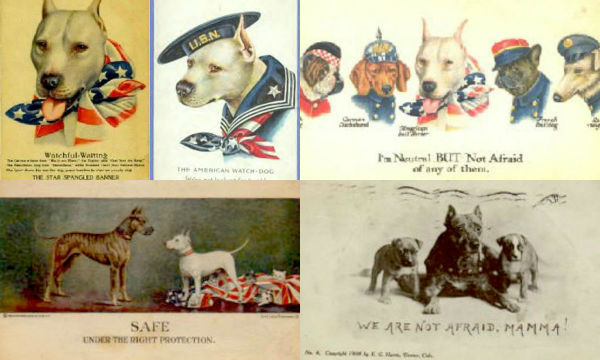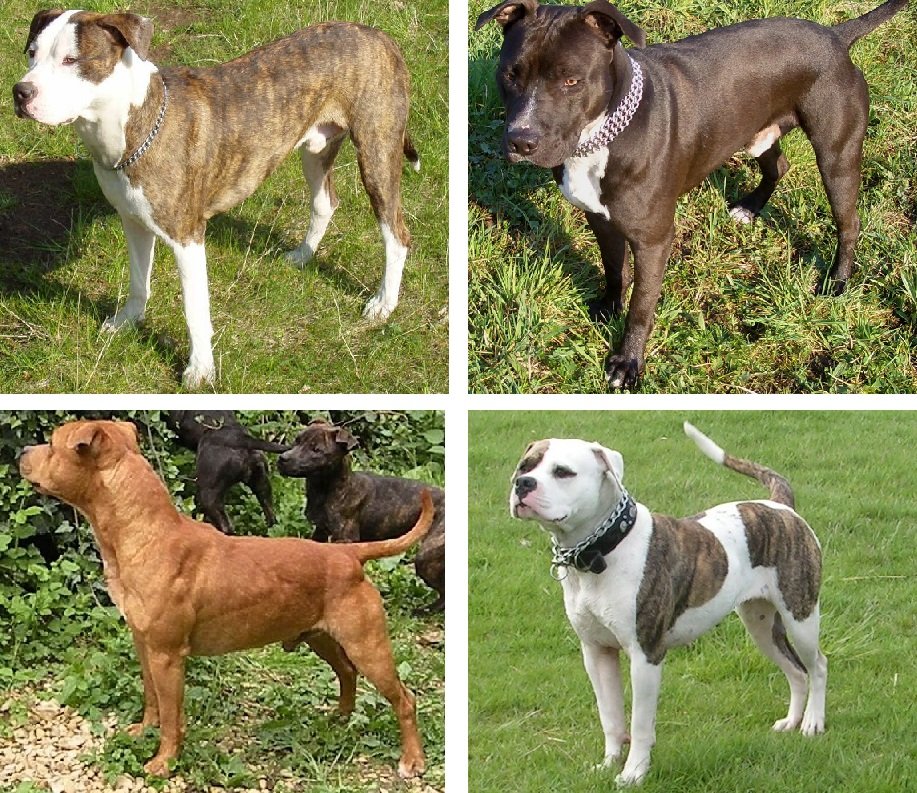Originating in England, the name “pitbull” may seem like a straightforward reference to a fierce and powerful dog. But did you know that it actually refers to a specific type of dog breed rather than a singular breed? The term “pitbull” encompasses several breeds, including the American Pit Bull Terrier, the American Staffordshire Terrier, and the Staffordshire Bull Terrier. Now, let’s uncover the intriguing history behind this name.
The name “pitbull” comes from the fact that these dogs were historically bred for pit fighting, a bloodsport popular in 18th and 19th century England. A blend of bulldogs and terriers, pitbulls were specifically bred for their strength, endurance, and tenacity in the fighting ring. While the cruel practice of pit fighting has been banned, pitbulls have since transitioned into more compassionate roles as loyal family pets, therapy dogs, and even search and rescue dogs. Despite their misunderstood reputation, they continue to exhibit remarkable loyalty and affection towards their human companions.

Where Did the Name Pit Bull Come From?
Pit bulls are often misunderstood and have gained a controversial reputation over the years. However, the origin of the name “pit bull” is rooted in history and has ties to dog fighting and bull-baiting. In this article, we will delve into the fascinating history of the name “pit bull” and shed light on its true meaning.
The Origins of Bull-Baiting and Dog Fighting
The name “pit bull” can be traced back to the 19th century when bull-baiting and dog fighting were popular forms of entertainment in England. Bull-baiting involved dogs attacking a tethered bull, while dog fighting pitted dogs against each other in a fight for dominance. Terrier-type dogs were commonly used in both activities due to their strength, agility, and tenacity.
During this time, bull-baiting and dog fighting took place in pits, hence the term “pit” in pit bull. These activities often occurred in makeshift arenas or pits where spectators gathered to watch the bloodsport. The name “pit bull” emerged as a way to categorize the dogs bred for these cruel competitions.
The Birth of the American Pit Bull Terrier
In the 1800s, pit dogs from England were brought to the United States by immigrants. These dogs, known as the Old English Bulldogs, were bred with various terrier-type dogs to create a breed specifically suited for dog fighting. This breeding program led to the development of the American Pit Bull Terrier.
The American Pit Bull Terrier inherited the strength and tenacity of the Old English Bulldogs and the agility and gameness of the terriers. These dogs were medium-sized, muscular, and known for their high energy levels. The name “pit bull” became synonymous with this specific breed, although it is often erroneously used as a catch-all term for any dog with similar physical characteristics.
The Modern Perception of Pit Bulls
Throughout the years, pit bulls have faced much controversy and misconceptions. Media portrayal and sensationalism have contributed to a negative image of these dogs. The misidentification of dogs with similar physical characteristics as pit bulls has also added to the confusion.
In recent times, efforts have been made to educate the public about pit bulls and challenge the stereotypes surrounding them. Many pit bull advocates argue that they are loyal, affectionate, and trainable dogs when properly socialized and trained. Organizations dedicated to pit bull rescue and rehabilitation have emerged, working towards dispelling the myths surrounding these dogs.
The Role of Breed-Specific Legislation
Breed-specific legislation, or BSL, refers to laws that target specific dog breeds considered to be dangerous, and pit bulls are often included in these legislations. The perception of pit bulls as dangerous has led to various restrictions on ownership and increased challenges for responsible pit bull owners.
The Controversy Surrounding BSL
The debate surrounding breed-specific legislation is complex. Supporters argue that it promotes public safety by focusing on breeds believed to be more prone to aggression. They view these laws as a precautionary measure to prevent dog bite incidents. However, opponents argue that BSL is ineffective and unfair. They contend that responsible ownership and proper training should be the focus instead of condemning an entire breed.
Evaluating the Effectiveness of BSL
Studies have shown mixed results regarding the effectiveness of breed-specific legislation. Some research suggests that BSL has not significantly reduced dog bite incidents or improved public safety. Instead, it may have unintended consequences such as promoting the illegal breeding and ownership of banned breeds, as well as shifting the focus away from responsible pet ownership.
Alternative Approaches
Many experts advocate for a shift towards breed-neutral laws, focusing on responsible pet ownership and owner accountability instead of targeting specific breeds. These approaches include comprehensive dog bite prevention strategies, such as education programs, responsible breeding practices, and promoting mandatory spaying and neutering.
Understanding Pit Bull Stereotypes
Despite the negative stereotypes surrounding pit bulls, it is important to remember that temperament and behavior are influenced by a variety of factors. Responsible breeding, proper socialization, and training play a significant role in shaping a dog’s behavior, regardless of its breed or physical appearance.
Factors Influencing Temperament
A dog’s temperament is shaped by genetics, environment, and individual experiences. While some pit bulls may exhibit aggressive behavior due to poor breeding or mistreatment, many others are friendly, loving, and well-behaved. It is essential to evaluate each dog on an individual basis, considering their unique personality and experiences, rather than making assumptions based on breed alone.
The Importance of Responsible Ownership
Responsible ownership is crucial for any dog, regardless of its breed. This includes providing proper socialization, training, mental stimulation, and exercise. Regular veterinary care and adhering to local laws and regulations are also essential aspects of responsible ownership. By focusing on these factors, we can help eliminate negative stereotypes and support a positive image of pit bulls and all dog breeds.
Conclusion
The name “pit bull” originated from the history of dog fighting and bull-baiting in England. While this term was initially used to categorize dogs bred for these activities, it has become synonymous with the American Pit Bull Terrier. Pit bulls have faced a significant amount of controversy and stereotyping, but it is important to assess each dog individually and promote responsible ownership. By understanding the history and context behind the name “pit bull,” we can work towards dispelling misconceptions and advocating for fair treatment of these dogs.
Where did the name Pitbull come from?
- Pitbulls got their name from their history of being used in dog fights in pits.
- The term “Pitbull” is not an official breed, but refers to a group of dog breeds including the American Pit Bull Terrier, Staffordshire Bull Terrier, and American Staffordshire Terrier.
- Pitbulls were originally bred for bull-baiting and later as farm dogs for herding cattle.
- The name “Pitbull” gained popularity due to their reputation as powerful and tenacious dogs.
- Despite their bad reputation, Pitbulls can be loving and loyal family pets with proper training and socialization.
Frequently Asked Questions
Curious about the origins of the name “Pitbull”? Look no further! Check out these engaging questions and answers to uncover the story behind this unique name.
1. What is the history behind the name “Pitbull”?
The name “Pitbull” actually refers to a specific breed of dog known as the American Pit Bull Terrier. This breed is the result of crossbreeding Bulldogs and Terriers in the 19th century for various purposes, such as hunting, guarding, and even entertainment in dogfighting.
Over time, the breed’s reputation became associated with both positive traits, like loyalty and intelligence, as well as negative stereotypes due to its use in illegal dogfighting. Despite this, responsible Pitbull owners and advocates continue to promote the breed’s positive qualities and work to challenge the misconceptions surrounding them.
2. How did the name “Pitbull” become popularized?
The name “Pitbull” became widely used to describe the American Pit Bull Terrier breed as it gained recognition and popularity throughout the years. The reputation and characteristics of the Pitbull captured the public’s attention, leading to the breed’s presence in various media including movies, TV shows, and music videos.
Pitbull, the American rapper, played a significant role in popularizing the name further. He adopted the name as his stage name and incorporated it into his brand, contributing to the breed’s recognition in popular culture. His music and energetic performances spread awareness about the Pitbull breed, helping to dispel some of the negative stereotypes associated with them.
3. Are there any other names for the breed aside from “Pitbull”?
Yes, there are several other names that refer to the same breed. Some of these names include American Staffordshire Terrier, Staffordshire Bull Terrier, and Stafford Terrier. These names often cause confusion because different countries and organizations may use different names to refer to the same breed.
It’s important to note that while these names may be used interchangeably, the breed’s characteristics, temperament, and physical traits remain consistent. Whether you call them Pitbulls or use one of their alternative names, they are still the same loyal and affectionate dogs.
4. What are some common misconceptions about Pitbulls?
One common misconception about Pitbulls is that they are inherently aggressive and dangerous. In reality, a Pitbull’s temperament is influenced by various factors, including breeding, socialization, and responsible ownership. With proper training, care, and socialization, Pitbulls can be loving, gentle family pets.
Another misconception is that Pitbulls have locking jaws, making them more dangerous than other breeds. This is not true. Pitbulls have the same jaw structure as any other dog breed, and there is no physiological mechanism that allows them to lock their jaws.
5. How can we promote a positive image for Pitbulls?
To promote a positive image for Pitbulls, it’s essential to spread awareness about the breed’s true nature and challenge the misconceptions that surround them. Education plays a crucial role in debunking myths and stereotypes.
Additionally, responsible ownership is key. Proper training, socialization, and care are vital to raising well-behaved and happy Pitbulls. By being responsible Pitbull owners and actively participating in community events and outreach programs, we can help change the narrative and showcase the loving and loyal nature of these wonderful dogs.

The Dark History of Pitbulls
Summary
So, where did the name “Pitbull” come from? Well, it turns out that Pitbulls got their name from their history as workers in the pits. These strong and athletic dogs were originally bred for bull-baiting and later as fighting dogs. Despite their tough reputation, Pitbulls can make wonderful family pets when raised with love and care.
So, next time you see a Pitbull, remember their name comes from their history as pit workers, not because they are mean or aggressive. Pitbulls are just like any other dog, capable of being loyal, loving, and playful companions. It’s important not to judge them based on their name, but instead look at the individual dog and how they are raised and trained.
